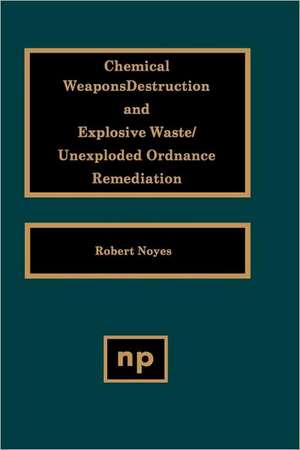Chemical Weapons Destruction and Explosive Waste: Unexploded Ordinance Remediations
Autor Robert Noyesen Limba Engleză Hardback – 30 dec 1996
Preț: 855.20 lei
Preț vechi: 1171.51 lei
-27% Nou
Puncte Express: 1283
Preț estimativ în valută:
163.64€ • 170.85$ • 135.43£
163.64€ • 170.85$ • 135.43£
Carte tipărită la comandă
Livrare economică 04-18 aprilie
Preluare comenzi: 021 569.72.76
Specificații
ISBN-13: 9780815514060
ISBN-10: 0815514069
Pagini: 250
Dimensiuni: 152 x 229 x 16 mm
Greutate: 0.53 kg
Editura: ELSEVIER SCIENCE
ISBN-10: 0815514069
Pagini: 250
Dimensiuni: 152 x 229 x 16 mm
Greutate: 0.53 kg
Editura: ELSEVIER SCIENCE
Public țintă
Firms taking part in Department of Defense funded cleanup programs.Cuprins
Part I: Chemical Weapons DestructionIntroductionChemical Stockpile Disposal ProgramBaseline IncinerationAlternatives to IncinerationNonstockpile ProgramCanadian ExperiencePart II: Explosive Waste RemediationIntroductionBiological Treatment ProcessThermal/Oxidation ProcessesOther ProcessesExplosives Contaminated DebrisPart III: Unexploded OrdnanceUXO Detection, Clearance, and ExtractionRecycling and ReuseDestroying and Recycling Materials Resulting from Dismantling Nuclear WeaponsSources of InformationIndex



























